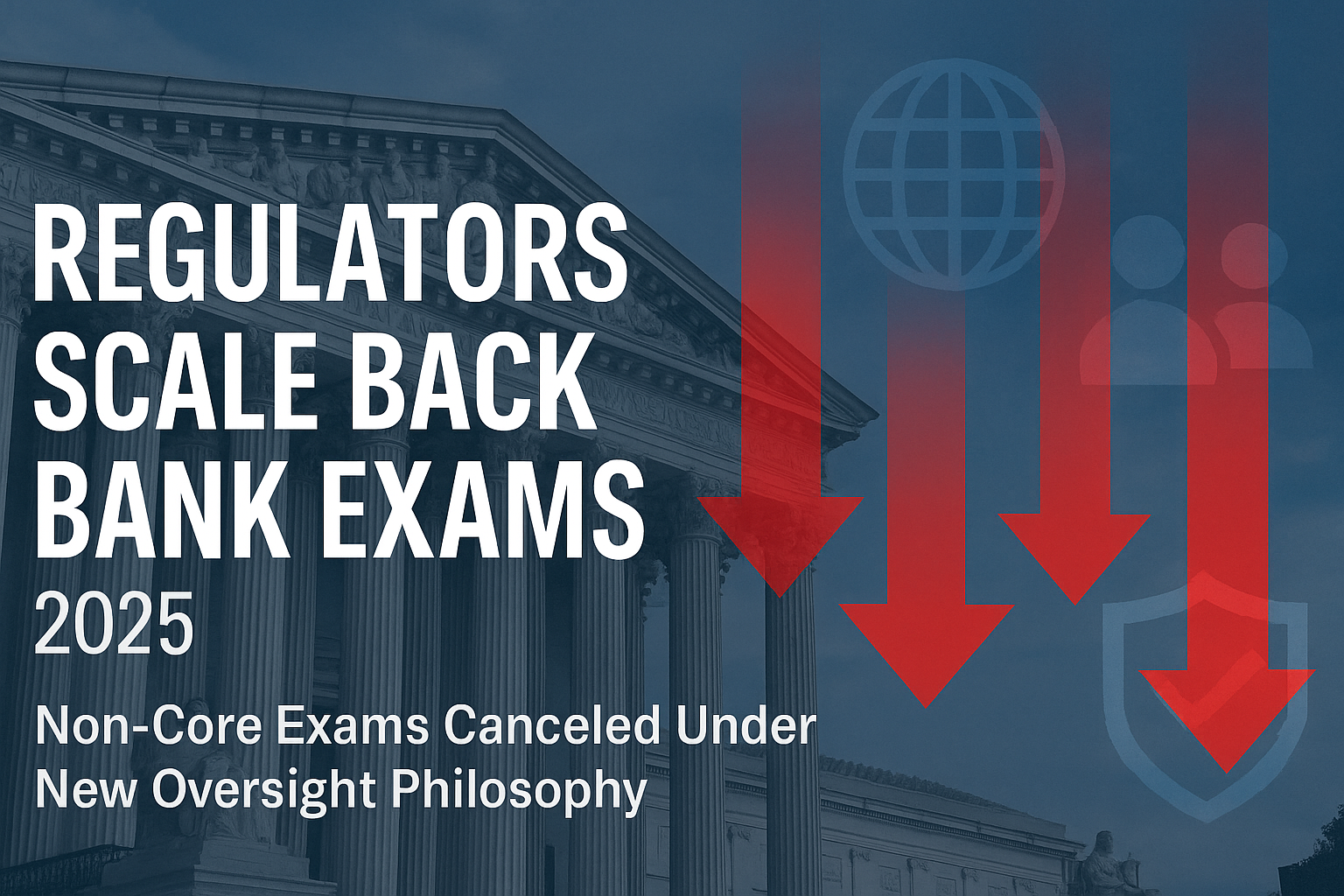Today, Reuters reported that U.S. financial regulators such as the OCC, Federal Reserve, and CFPB have begun canceling or postponing examinations in non-core supervisory areas—including reputation risk, climate risk, and diversity mandates—as part of a deregulatory shift.
This move aligns with prior policy signals: the removal of “reputation risk” as a rubric in supervision via executive directives, narrowing exam focus to core metrics like capital, liquidity, and traditional risk. Regulators are also favoring less aggressive enforcement tools (e.g. fewer “matters requiring attention” notices, more informal guidance) in lieu of formal intervention.
For banks, this change is more than operational relief—it’s a shift in governance expectations, risk monitoring priorities, and resource allocation in a changed supervisory environment.
Why This Shift Matters
- Resource rebalancing: Banks may no longer need to allocate as much internal bandwidth to climate, diversity, or reputational risk programs—but those functions can’t be ignored entirely if regulatory cycles shift again.
- Supervisory risk exposure redefined: With less emphasis on non-core oversight, deficiencies in core risk areas (capital, credit, liquidity) will draw sharper focus.
- Strategic flexibility gains: This change gives banks space to adjust priorities, pivot investments, or streamline compliance burdens.
- Change in enforcement tone: Moving from strict formal enforcement to informal guidance raises questions about predictability, consistency, and scope creep.
What Banks Should Do to Adapt
- Review your exam risk priorities
Reassess your internal risk discipline. Focus efforts on control maturity in credit, capital, liquidity, operations, cyber. - Assess non-core programs but with dynamic posture
Retain monitoring of climate, ESG, reputational, diversity risks—but calibrate their scale and documentation in lower-demand periods. - Update exam playbooks and narratives
Prepare narratives that emphasize core strength and resilience. Document changes that align with reduced exam scrutiny. - Strengthen flexibility in compliance staffing
Reallocate compliance, audit, and risk resources toward core areas—keeping the ability to scale non-core oversight if exam priorities shift again. - Monitor for exam priority reversals
Regulatory agendas can change—be ready if emphasis returns to climate, DEI, reputational risk, or new mandates emerge. - Engage in supervisory dialogue
Use periods of lower intensity to build stronger relationships, share transparency on internal controls, and influence exam focus.
Related Context in Early September
- This exam scaling follows the Fair Banking Executive Order and reputation-risk removal initiatives, reinforcing a cohesive change in supervisory philosophy. U.S. Department of the Treasury
- In the Gibson Dunn September 2025 regulatory review, agencies are also re-proposing rules codifying prohibition of reputation risk in supervision and discussing merger review efficiencies. Gibson Dunn
- Treasury remarks in September also signaled regulatory rollback momentum: proposed rules to define “unsafe or unsound practice,” codify removal of subjective exam criteria, and withdraw interpretive guidance documents. U.S. Department of the Treasury
These alignments suggest that canceling or scaling back non-core exams is not ad hoc, but part of a broader supervisory reprioritization.
How Saturn Partners Can Help
In a shifting exam environment, banks that adjust strategically—not reactively—will lead. Our services include:
- Exam readiness revamp: Align your internal risk matrix to the new supervisory emphasis on capital, liquidity, and credit.
- Control rationalization: Help you streamline and document essential non-core programs while maintaining readiness.
- Narrative & board materials: Draft exam narratives and board briefings that highlight risk discipline, agility, and strategic flexibility.
- Monitoring & early warning: Keep you apprised of shifts in exam focus and regulatory resets.
Want to position your bank to thrive in a post-intensity exam era? Let’s build your supervisory strategy today.

